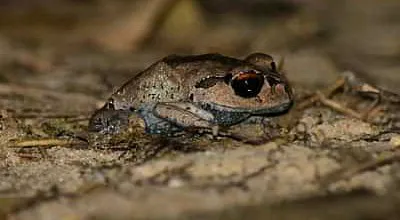Finding new life in Lauyachhara (red-eyed frog)
A new frog has been found. The frog was there before. But they had different identities and names. Two wildlife researchers discovered the true identity of this frog. They named the frog Bengali, English and scientifically. The story of the discovery of the frog has also been included in an international research paper. Another new species of frog has been added to the world's frog list.
The frog was found in Lauachhara National Park in Kamalganj upazila of Moulvibazar. And it was found by wildlife researchers Hassan Al-Razi and Marjan Maria. Their research work is overseen by Russia and co-sponsored by Professor Nick Pyarkov of Moscow University. Researchers have named this frog 'Red Eye Frog of Sylhet'. The English name is Sylheti Litter Frog. Their research paper on the frog was published in the UK's Journal of Nature History on May 26.
Advertising
Hassan al-Razi, a member of the research team, said the frog had long been thought to belong to the Leptobrachium smithi species. But they think that this species of frog is far away from Bangladesh, Indonesia and its surroundings. Birds can come. But frogs can't come that far. ...
The frog was found in Lauachhara National Park in Kamalganj upazila of Moulvibazar. And it was found by wildlife researchers Hassan Al-Razi and Marjan Maria. Their research work is overseen by Russia and co-sponsored by Professor Nick Pyarkov of Moscow University. Researchers have named this frog 'Red Eye Frog of Sylhet'. The English name is Sylheti Litter Frog. Their research paper on the frog was published in the UK's Journal of Nature History on May 26.
Advertising
Hassan al-Razi, a member of the research team, said the frog had long been thought to belong to the Leptobrachium smithi species. But they think that this species of frog is far away from Bangladesh, Indonesia and its surroundings. Birds can come. But frogs can't come that far. ...



